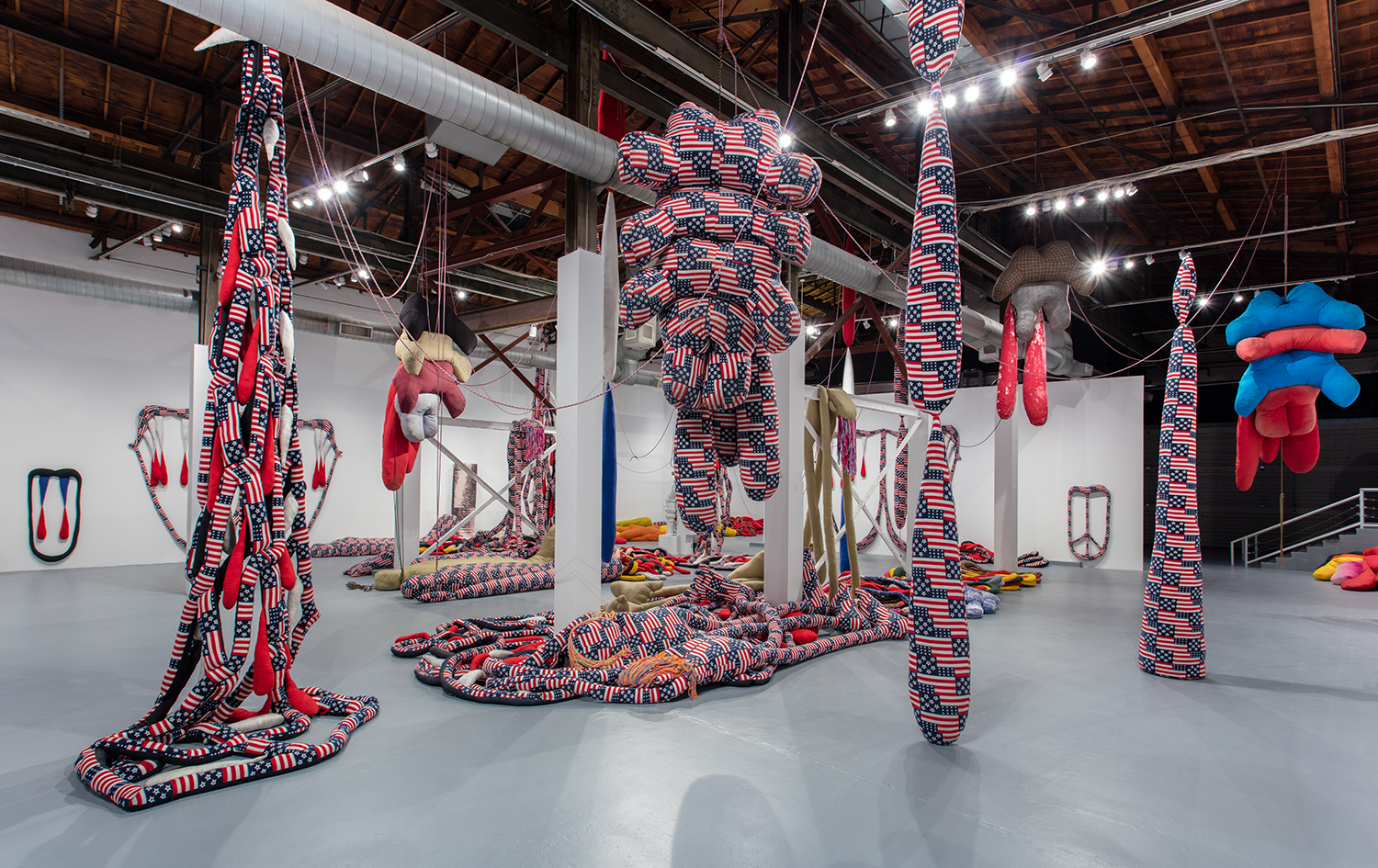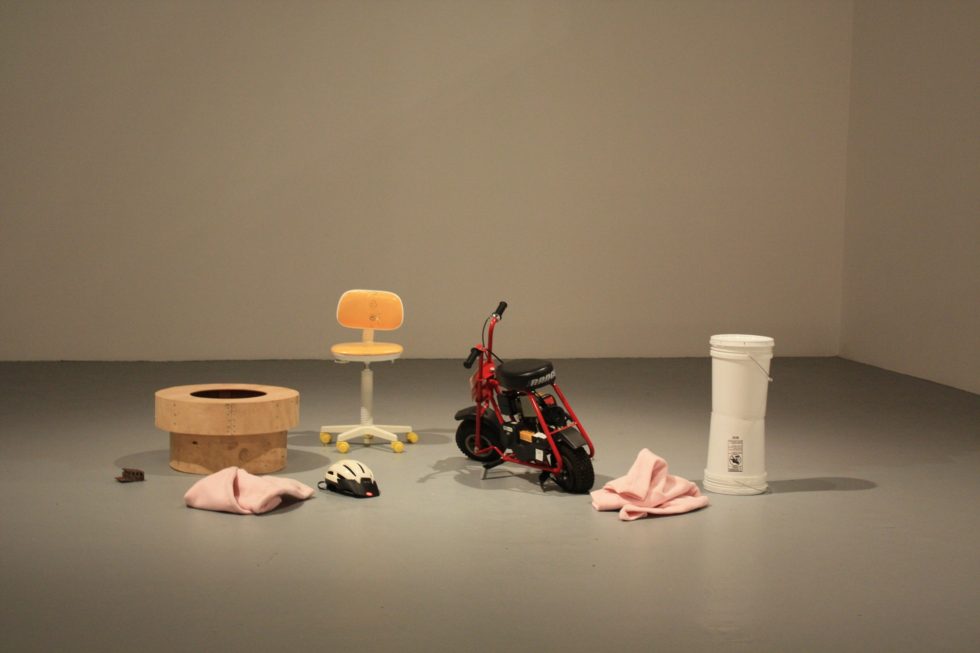

Then, the artist applies different grades and colors of gunpowder, like dry pigment, around the stencils, and the entire canvas is covered with cardboard anchored down to contain the explosions. Volunteers cut out the stencils, which are then arranged under Cai’s supervision on a ground of canvas or paper. The artist starts by creating stencils, many of which he draws freehand using a long tool with a charcoal tip, as he walks on a huge sheet of cardboard on the floor. Videos in the back room of the Geffen exhibit space show the process, an elaborate form of fumage, behind the finished pieces. In early March, the artist worked with more than 100 local volunteers to create three breathtaking new gunpowder images of immense scale, also commissioned by MOCA for this exhibition. Mural from Mystery Circle explosion event, The Geffen Contemporary, The Museum of Contemporary Art (MOCA), Los Angeles, 2012 His inspiration comes form various sources, including Chinese history and medicine, feng shui, modern astrophysics, and space travel, as well as his interest in natural and supernatural phenomena. Transcending the barriers of “time and space,” Cai grapples with themes like the forces of nature, and their impact on humanity through the ages. Apparently, the medium has become predictable for him, as he extracts from it a fascinating style of symbolic and often narrative imagery. Cai calls his work in gunpowder, “unpredictable splendor,”but in the years since 1985, after completing his studies, when he began experimenting with explosives, the artist has mastered his chosen medium, learning to control it with finesse. Obviously, gunpowder is a volatile medium. The artist considers time and space to be one entity, because the Chinese word for universe, yuzhou, is an amalgam of space (yu) and time (zhou). Cai’s art reflects his fascination with hidden forces in the physical and metaphysical world, and echoes his interest in cosmological phenomena. Beyond the excitement, the dazzle, and fire of the artist’s process, what’s compelling is how effectively he expresses his vision through the carefully realized detail of his finished pieces. It’s conceivable that such theatrical delivery might overshadow the impact of the final work.
Geffen moca museum series#
It involved 40,000 rockets, as well as other pyrotechnics, which exploded in a series of startling blasts, leaving behind a pattern like crop circles - like those that have mysteriously appeared on grain fields around the world in recent decades - and the burned imprint of an alien god on the northern exterior wall of the museum. The latest in Cai’s Projects for Extraterrestrials series that began in 1989 and has since included more than 30 works, the site-specific work was created for MOCA.

In case of rogue sparks, Los Angeles Fire Department trucks were staked outside the perimeter of the adjacent parking lot where thousands of Angelenos clamored for admission to view the artistic spectacle from behind a chain link fence, as a prelude to viewing the artist’s epic drawings and installations inside the museum.Īs the sun began to set, Cai gave a theatrical countdown, and lit the fuse to ignite a four-stage extravaganza of fireworks.

For the opening of Sky Ladder, the artist’s first west coast solo exhibit, Cai staged the spectacular outdoor debut of Mystery Circle, an explosive event, outside the Geffen Contemporary at MOCA. With gunpowder as his preferred artistic medium, Cai’s work is inherently dramatic, even potentially dangerous. His art is a blast - explosive and incendiary in a literal sense. There’s no need for hyperbole to describe the work of Chinese born, New York-based artist Cai Guo-Qiang. MOCA - The Museum of Contemporary Art, Los Angeles Photo by Joshua White, courtesy The Museum of Contemporary Art, Los Angeles Mystery Circle explosion event, realized on site at The Geffen Contemporary, The Museum of Contemporary Art (MOCA), Los Angeles, 2012


 0 kommentar(er)
0 kommentar(er)
